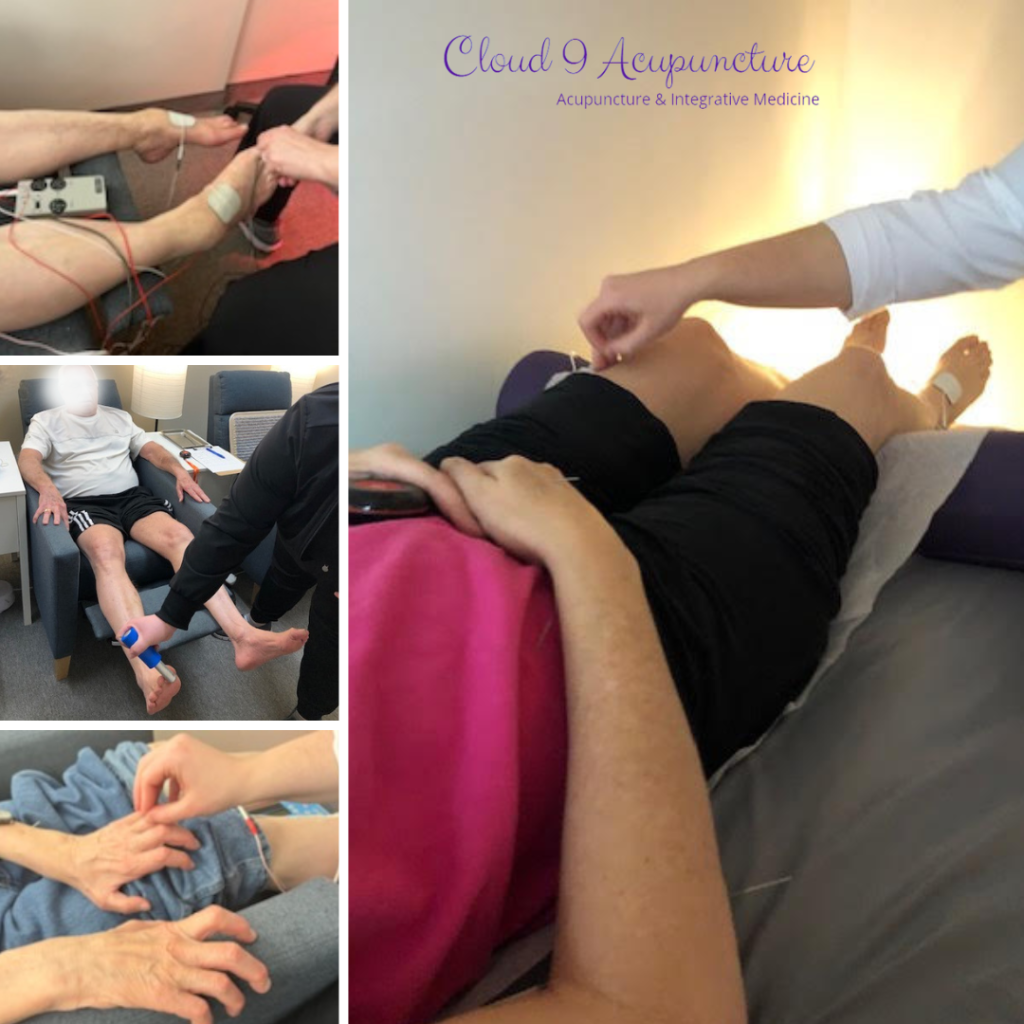- Cloud 9 Acupuncture & Integrative Medicine22 West Padonia Rd. Suite A-203
Timonium, MD 21093
Pain
Natural Relief for Neurological Disorders in Greenville, SC: How Cloud 9 Acupuncture Delivers Results in Just Weeks
If you’re living with chronic nerve pain, migraines, or facial nerve disorders, you know how life-altering these conditions can be. At Cloud 9 Acupuncture & Integrative Medicine in Greenville, SC, we specialize in treating neurological disorders like neuropathy, trigeminal neuralgia, migraines, shingles pain, post-herpetic neuralgia, and Bell’s palsy—with remarkable results, often within just a few weeks.
Our unique approach combines advanced acupuncture protocols with cutting-edge integrative therapies to help restore nerve function, reduce pain, and improve quality of life—without relying solely on medications.
Conditions We Successfully Treat at Cloud 9
✅ Peripheral Neuropathy
Often caused by diabetes, chemotherapy, or unknown factors, neuropathy leads to burning, tingling, and numbness in the hands and feet. Our non-invasive treatments:
- Improve circulation and nerve conduction
- Reduce pain and inflammation
- Promote nerve regeneration
✅ Trigeminal Neuralgia
This intense facial nerve pain can be debilitating. Our approach to trigeminal neuralgia:
- Uses precision acupuncture to calm overactive nerve signals
- Reduces spasms and facial pain naturally
- Often brings noticeable relief within weeks
✅ Migraines & Chronic Headaches
Instead of masking symptoms with medication, we address the root causes of migraines by:
- Regulating the nervous system
- Reducing inflammation
- Balancing hormones and stress response
Many patients report fewer and less intense migraines after just a few sessions.
✅ Shingles & Post-Herpetic Neuralgia
Shingles pain can linger for months after the rash is gone. Our treatment:
- Soothes nerve endings
- Supports the body’s antiviral response
- Shortens the duration of nerve pain
✅ Bell’s Palsy
Early intervention is key with Bell’s palsy. We help by:
- Stimulating facial nerves and muscles with acupuncture
- Improving facial symmetry and muscle control
- Speeding up recovery and reducing long-term effects

Why Our Neurological Treatments Work So Well
At Cloud 9 Acupuncture & Integrative Medicine, we combine time-tested Eastern techniques with modern innovations to deliver results safely and quickly:
⭐ Advanced Acupuncture Protocols
Targeted acupuncture points are used to:
- Rebuild nerve pathways
- Increase circulation to damaged tissues
- Balance the nervous system
⭐ ATP Resonance BioTherapy™
A painless, non-invasive therapy that delivers low-level electrical pulses to support:
- Cellular repair
- Nerve regeneration
- Pain reduction without drugs
⭐ Medical Ozone Therapy
Ozone therapy reduces inflammation, improves oxygenation, and helps the body heal damaged nerves naturally.
⭐ Nutritional & Vitamin Injection Therapy
Nerve health depends on essential nutrients like B12, B-complex. We deliver B 12 via direct injections for fast, effective absorption.
What to Expect: Relief in Weeks
Many of our patients notice improvements within the first 3–6 treatments. Completion of the protocol will depend on the severity and duration of symptoms.
We don’t just mask pain—we aim for nerve repair and functional recovery.
Success Stories from Greenville, SC Patients
“After years of dealing with neuropathy pain, Cloud 9 helped me walk without burning in my feet. I felt real relief by week three!” – John D., Greenville, SC
“My migraines dropped from 3 times a week to once a month. I finally have my life back.” – Emily T., Greer, SC
Ready to Feel Like Yourself Again?
If you or someone you love is struggling with a neurological condition like neuropathy, trigeminal neuralgia, Bell’s palsy, or chronic migraines, don’t wait. The sooner you begin treatment, the better the results.
📍 Call 864-908-9032 or book a consultation with Cloud 9 Acupuncture & Integrative Medicine in Greenville, SC today.
Discover a safe, natural, and effective way to relieve nerve pain and restore function—without relying on long-term medications or invasive procedures.

Tired of living with the pain and discomfort of neuropathy? Give us a Call
Tired of living with the pain and discomfort of neuropathy? You’re not alone. Neuropathy, a result of nerve damage, can significantly impact your quality of life. But there’s hope, and it’s closer than you think. Cloud 9 Acupuncture & Integrative Medicine in Greenville, SC, is your trusted partner in finding effective neuropathy relief.
Why Choose Cloud 9 Acupuncture for Neuropathy Treatment?
At Cloud 9 Acupuncture, Dr. Laura Parks, with over 15 years of clinical success, specializes in treating complex, chronic cases, including neuropathy. We understand that each individual’s experience with neuropathy is unique, so we offer custom treatment plans to deliver the best results. We combine traditional acupuncture with advanced therapies to target the root cause of your neuropathy and alleviate your symptoms.
Effective Neuropathy Relief in Greenville, SC
Living with neuropathy can be challenging. You might experience:
- Numbness and tingling in your hands and feet
- Sharp, shooting pain
- Muscle weakness
- Sensitivity to touch
- Difficulty with balance and coordination
Our comprehensive approach to neuropathy treatment addresses these symptoms and works to improve nerve function. We focus on reducing pain, increasing circulation, and promoting healing.
Benefits of Acupuncture for Neuropathy
Acupuncture has been shown to be an effective treatment for neuropathy. It works by:
- Stimulating nerve function
- Reducing inflammation
- Increasing blood flow to the affected areas
- Triggering the release of endorphins, the body’s natural painkillers
Our patients often report significant improvements in their symptoms, including reduced pain, increased mobility, and better sleep.
Cloud 9 Acupuncture’s Expertise
Dr. Laura Parks and the team at Cloud 9 Acupuncture are dedicated to providing the highest quality care. We are experts in treating not only neuropathy but also other chronic conditions such as chronic pain management, arthritis, autoimmune conditions, and fibromyalgia. Our integrative approach ensures that we address all aspects of your health and well-being.
Book Your Consultation Today
Don’t just live with the pain. Take the first step towards neuropathy relief by booking a consultation with Cloud 9 Acupuncture & Integrative Medicine. Find out if you are a candidate for treatment and learn more about how acupuncture and our advanced therapies can help you with your specific condition.
Contact us today at (864) 908-9032 or visit our website at www.Cloud9AcuClinic.com. We are located at 528 Howell Road, Suite 14, Greenville, SC 29615.
Acupuncture for CRPS in Greenville, SC
Did you know? ….
Acupuncture can be successfully used to treat CRPS, or Complex Regional Pain Syndrome because acupuncture is an incredible therapy that helps balance the neuro-endo axis and helps re-create appropriate functioning of the pain receptor cells.
CRPS can be truly debilitating with severe levels of intense pain, but now there is hope, here in Greenville, SC.
According to Mayo clinic,
“Signs and symptoms of CRPS include:
- Continuous burning or throbbing pain, usually in the arm, leg, hand or foot
- Sensitivity to touch or cold
- Swelling of the painful area
- Changes in skin temperature — alternating between sweaty and cold
- Changes in skin color, ranging from white and blotchy to red or blue
- Changes in skin texture, which may become tender, thin or shiny in the affected area
- Changes in hair and nail growth
- Joint stiffness, swelling and damage
- Muscle spasms, tremors and weakness (atrophy)
- Decreased ability to move the affected body part”
When using acupuncture for CRPS, we can easily provide relief without needling the area of pain. Most CRPS patients find this a relief to hear. Some patients experience a reduction in pain during the first treatment, for others their may be a delay of a day or two, and others it may take a few weeks before improvements begin. However, there is over an 85% success rate in treating the chronic pain that comes from CRPS.
Our biggest piece of advice is to not wait to get treatment. There is no need to wait until an official diagnosis before seeking help at our clinic for pain symptoms, whether it’s from CRPS or from a known injury, or something else entirely, acupuncture is very good for the management of pain. Many of our patients begin care at our clinic for their pain while they wait for their scheduled doctors appointment for any x-rays or imaging they may need. This way, our patients can experience some pain relief (without side effects) while they wait to see the doctor.
Many people find acupuncture to be a superior option for pain relief and pain management, especially compared to medical interventions like cortisone injections, medications or surgery.
At our clinic, we always begin with a consultation so our medical director, Dr. Laura Parks, can get a complete medical assessment and prognosis for treatment outcomes. Once the consultation concludes, Dr. Laura can outline different treatment options unique to your medical needs and wellness goals.
Begin with a consultation today and get back to living your best life! Call 864-908-9032 to get started.

Links:
Treatment for Fibromyalgia in Greenville, SC
Now there is Hope! Right here in Greenville, South Carolina we can treat fibromyalgia with over a 90% reduction in pain and symptoms.
The secret to our success is to combine acupuncture and our other natural, advanced therapies to create faster, more effective healing for complex, chronic conditions such as fibromyalgia and other autoimmune conditions.
To treat fibromyalgia, we use a clinically proven set of acupuncture points to reduce the symptoms of fibromyalgia and bring the body and the immune system back into balance. Then, we combine acupuncture with fully oxygenating the blood supply by using O3 Regenerative Therapy™, and optimizing cellular functioning using ATP Resonance BioTherapy™, and Direct Vitamin Injection Therapy™ to bring key nutrients back into the body useful for regulating the immune system and giving energy to fatigued, tight muscles.
Ready to learn more? Don’t wait another day. Call us at 864-908-9032 to schedule a consultation with our Medical Director, Dr. Laura Parks, D.Ac., L.Ac.

Pregnancy Support in Greenville, SC
At Cloud 9 Acupuncture & Integrative Medicine we specialize in Women’s Health, including pregnancy care.
If you are suffering during pregnancy from morning sickness, or headaches or migraines, low back pain, sciatica, or anxiety or depression, we can help with acupuncture and other advanced natural therapies.
In the final trimester, we can help with Breech presentation, flipping the baby into the correct position to begin labor. Or if needed, we can assist with natural labor induction treatments to avoid a C-section or further medical interventions.
We regularly receive referrals from local Midwives offices looking to help their pregnant patients avoid C-sections by using acupuncture services with us.
If you have more questions on how we can help, be sure to call us to schedule a consultation at 864-908-9032.


